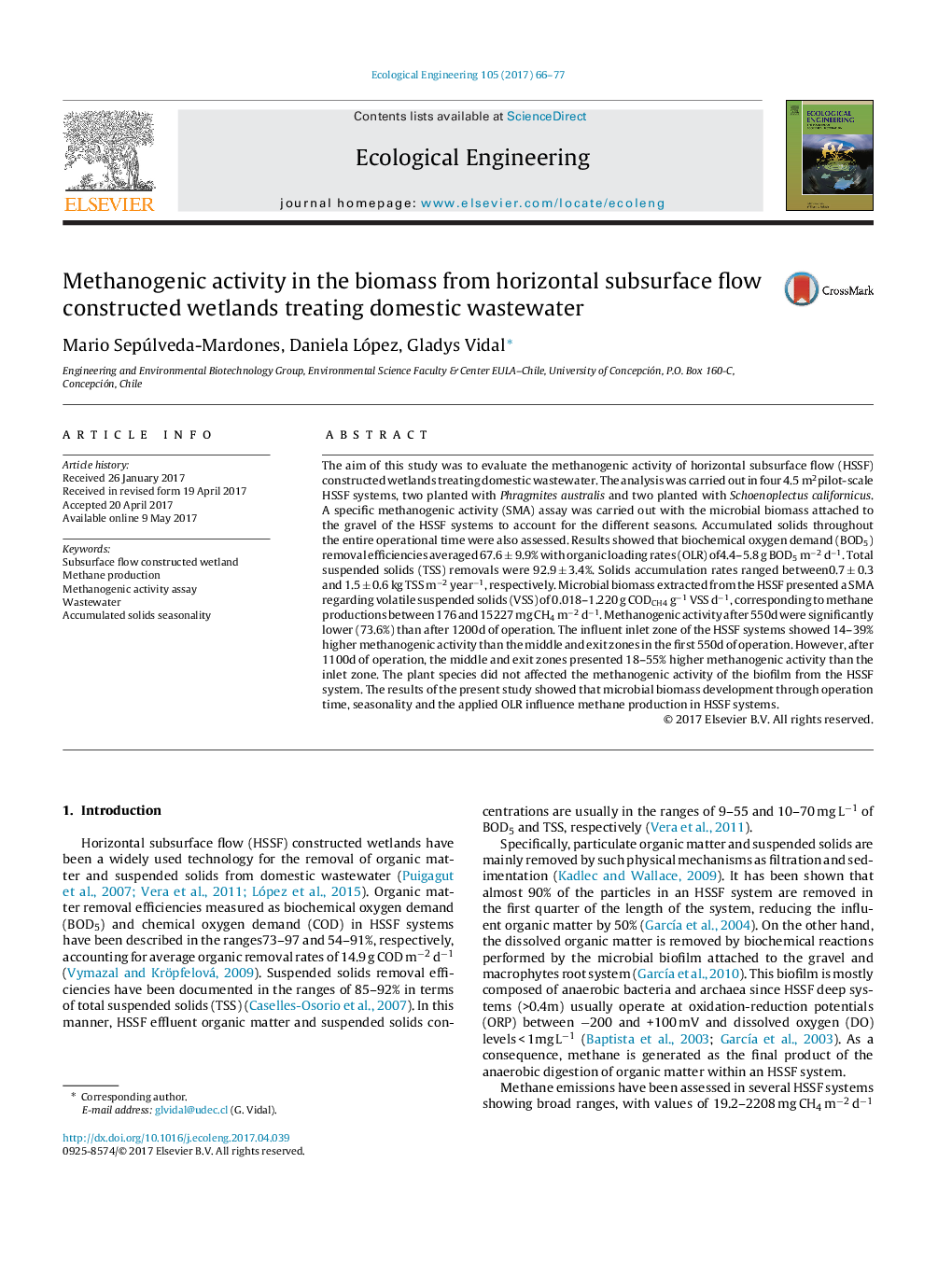| Article ID | Journal | Published Year | Pages | File Type |
|---|---|---|---|---|
| 5743599 | Ecological Engineering | 2017 | 12 Pages |
The aim of this study was to evaluate the methanogenic activity of horizontal subsurface flow (HSSF) constructed wetlands treating domestic wastewater. The analysis was carried out in four 4.5 m2pilot-scale HSSF systems, two planted with Phragmites australis and two planted with Schoenoplectus californicus. A specific methanogenic activity (SMA) assay was carried out with the microbial biomass attached to the gravel of the HSSF systems to account for the different seasons. Accumulated solids throughout the entire operational time were also assessed. Results showed that biochemical oxygen demand (BOD5) removal efficiencies averaged 67.6 ± 9.9% with organic loading rates (OLR) of4.4-5.8 g BOD5 mâ2 dâ1. Total suspended solids (TSS) removals were 92.9 ± 3.4%. Solids accumulation rates ranged between0.7 ± 0.3 and 1.5 ± 0.6 kg TSS mâ2 yearâ1, respectively. Microbial biomass extracted from the HSSF presented a SMA regarding volatile suspended solids (VSS) of 0.018-1.220 g CODCH4 gâ1 VSS dâ1, corresponding to methane productions between 176 and 15227 mg CH4 mâ2 dâ1. Methanogenic activity after 550d were significantly lower (73.6%) than after 1200d of operation. The influent inlet zone of the HSSF systems showed 14-39% higher methanogenic activity than the middle and exit zones in the first 550d of operation. However, after 1100d of operation, the middle and exit zones presented 18-55% higher methanogenic activity than the inlet zone. The plant species did not affected the methanogenic activity of the biofilm from the HSSF system. The results of the present study showed that microbial biomass development through operation time, seasonality and the applied OLR influence methane production in HSSF systems.
